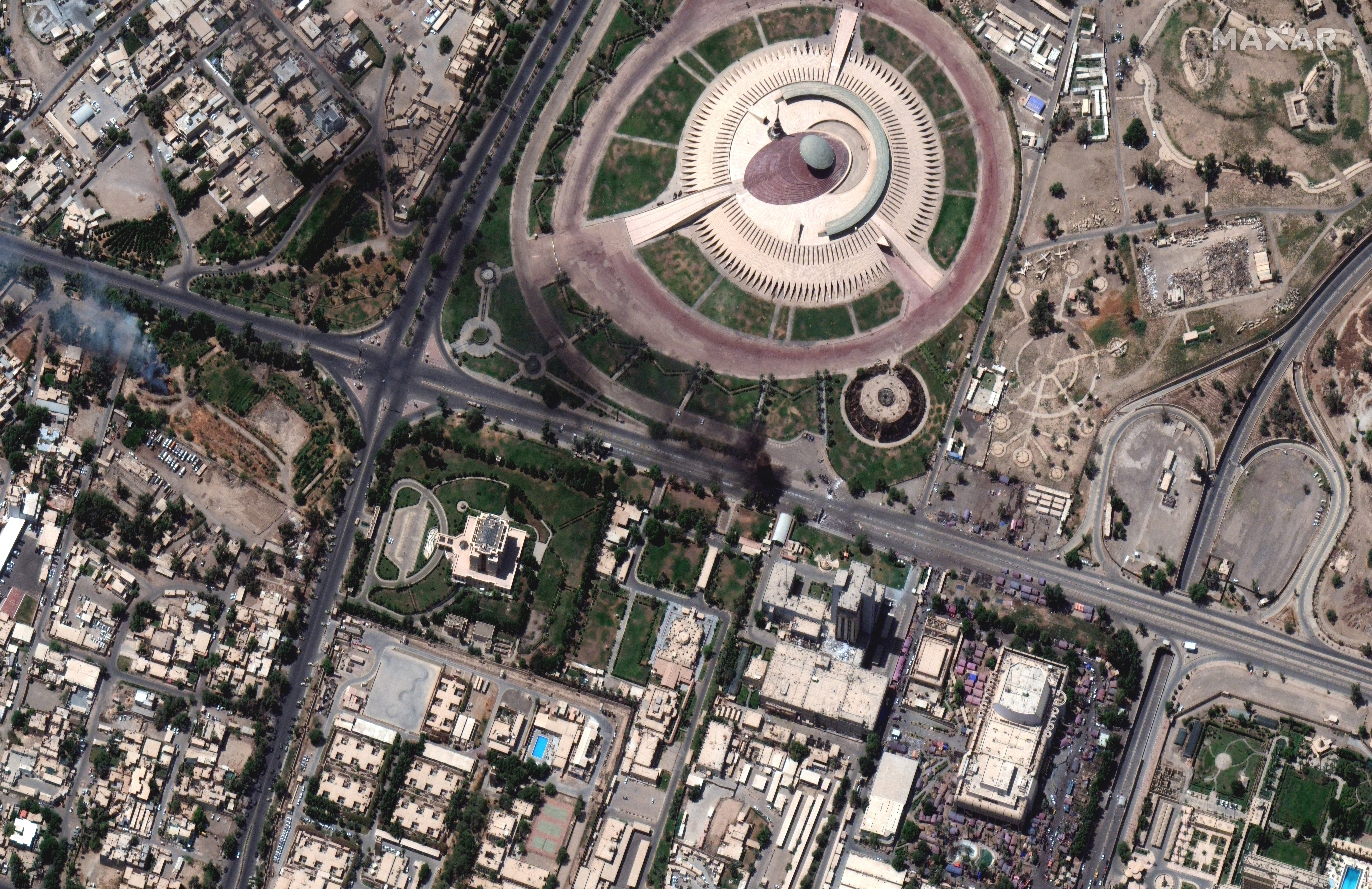U.S. urges calm as violent protests erupt in Baghdad
Deadly protests in Baghdad’s Green Zone have left hundreds injured as Iraqi security forces have deployed tear gas to quell protesters.


Protests in Baghdad over the announcement that Muqtada al-Sadr, a prominent Iraqi Shia cleric, will depart from political life plunged the city into chaos, fueling concerns that clashes may threaten a nearby U.S. embassy compound or American troops stationed in the country.
Coming on the one-year anniversary of America’s chaotic withdrawal from Afghanistan, the scenes in Baghdad paint a picture that may be eerily familiar to U.S. officials.
But the State Department has so far avoided sounding the alarm over potential danger to Americans in Iraq.
Deadly protests in Baghdad’s Green Zone, a heavily fortified area established by the U.S. during its 2003 invasion, have left hundreds injured as Iraqi security forces have deployed tear gas to quell protesters, some of whom have already gained access to Iraq's Republican Palace, including its swimming pool.
American troops have not been involved in the protests, but a video featuring a helicopter forced the State Department to dispel rumors that an evacuation was taking place in Baghdad. The U.S. handed over control of the Green Zone to Iraq in 2009, raising concerns for American embassy officials working in Baghdad.
The situation in Baghdad hasn’t prompted the State Department to begin evacuating the American embassy compound, but U.S. officials are urging protesters to remain peaceful.
“We urge all those involved, to remain calm, abstain from violence, and pursue peaceful avenues of redress,” said Vedant Patel, a State Department spokesperson in a Tuesday press briefing. “The right to peaceful public protests is a fundamental element of all democracies. But demonstrators need to respect the property and institutions of the Iraqi Government which belong to and serve the Iraqi people.”
Al-Sadr emerged as a major winner in the country’s October elections but failed to secure a majority that didn’t include his rivals, including Iran-backed Shi’ite parties.
The White House on Monday also described the events unfolding in Baghdad as “disturbing,” but National Security Council spokesperson John Kirby dismissed reports of an imminent evacuation.
Douglas Ollivant, a senior national security studies fellow at the New America Foundation, doesn’t believe the U.S. presence in the country will be affected by any unrest in Baghdad.
“It could go slightly down, it could go slightly up,” Ollivant said. “But they really are ensconced on the Iraqi bases away from the civilian population just doing this training and advising, assisting, equipping role. So they're really totally isolated from any violence that's happening downtown.”
The unrest comes as the U.S. has shifted its operations in Iraq from maintaining a combat presence to providing intelligence support and logistical capabilities to Iraqi forces. More than 2,500 U.S. military personnel are stationed in Iraq.
America’s presence in the country has dipped in recent years and was reduced further following a January 2020 drone attack approved by then-President Donald Trump that killed Iranian general Qasem Soleimani, prompting the Iraqi government to announce a resolution to halt U.S. troop operations.
Despite a recent increase Iranian-backed attacks against American troops, Ollivant doesn’t believe there’s a political appetite to entertain a serious reduction of U.S. forces in Iraq as there was for Afghanistan.
“A presence in Iraq is relatively cheap as military deployments go because there's a port right there and you can drive up the road, as opposed to Afghanistan where everything had to be flown in or taken through very long and hazardous routes through Pakistan or elsewhere,” Ollivant said.












